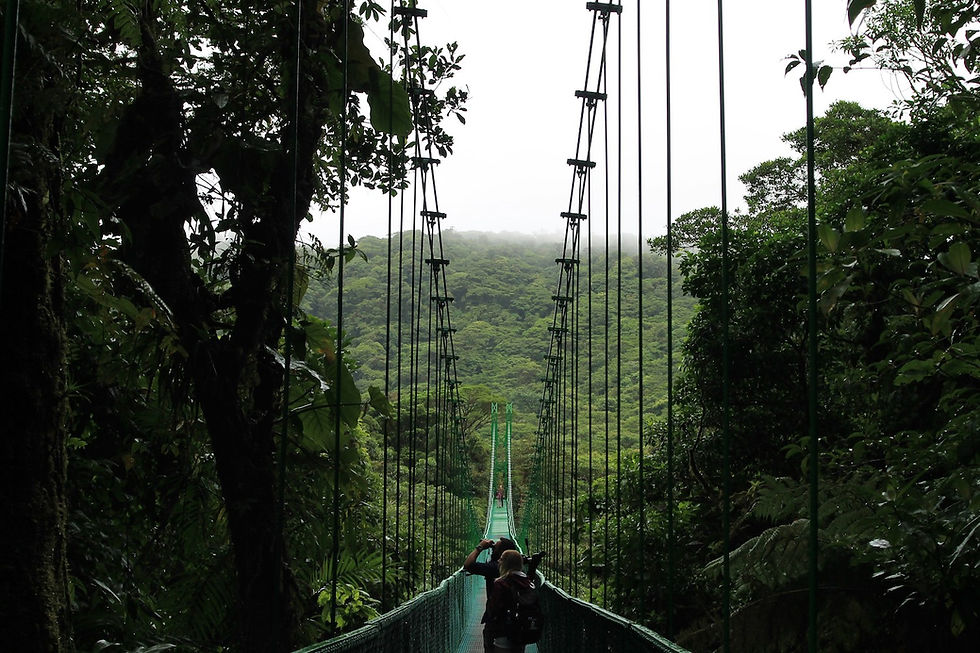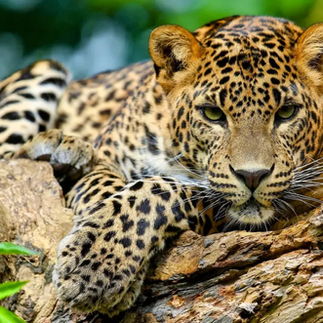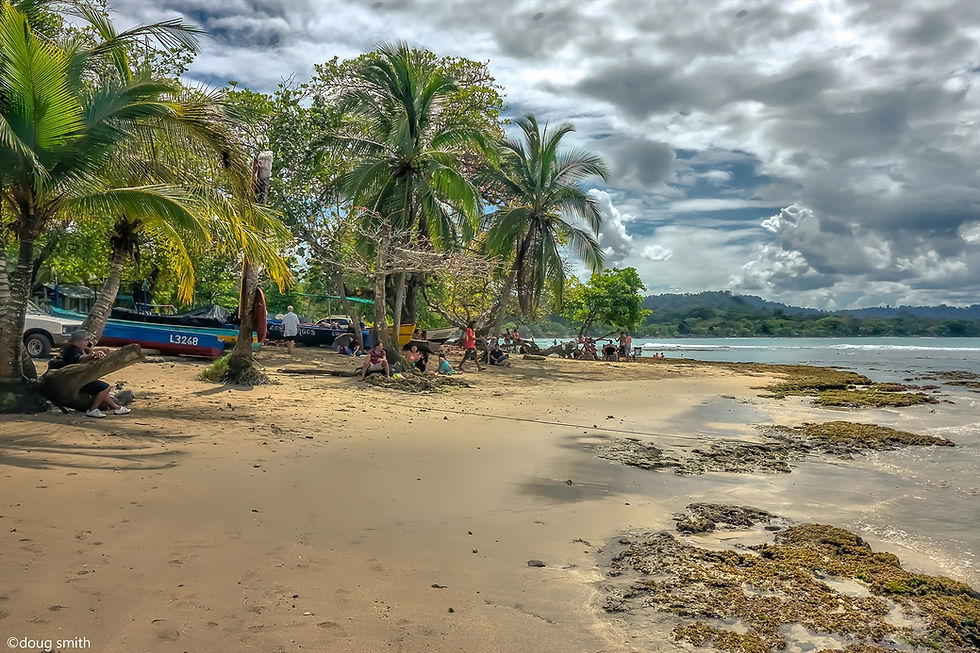Costa Rica's Ecosystems & Biodiversity: A Natural Treasure
- Esteban Acedo

- Apr 17
- 6 min read
Picture waking up to the distant calls of howler monkeys, stepping out of your eco-lodge into a misty cloud forest, and observing vibrant toucans soaring through the treetops. This is daily life in Costa Rica, a country that, although small, contains some of the planet's most abundant biodiversity. Housing nearly 6% of the world's species and with more than 25% of its territory under protection, Costa Rica serves as a vibrant sanctuary for nature enthusiasts.
In this guide, we’ll dive into Costa Rica's Ecosystems & Biodiversity, explore the unique wildlife they shelter, and discover why conservation is key to preserving this paradise for generations to come.

What is an Ecosystem?
Think of an ecosystem as nature’s way of keeping everything in balance. It’s a living network where plants, animals, and even tiny microbes interact with their surroundings, whether it’s the soil beneath them, the air they breathe, or the water they rely on. Every element plays a role, from towering rainforest trees that provide shelter to the smallest fungi breaking down nutrients in the earth. These ecosystems come in all shapes and sizes, from vast oceans and dense jungles to misty cloud forests and even city parks. Each one supports life in its own unique way, making our planet a beautifully interconnected web of biodiversity.

Rainforests: The Heart of Costa Rica’s Biodiversity
Costa Rica’s rainforests are some of the most breathtaking and ecologically important places in the world. These lush, humid environments support thousands of species, many of which are found nowhere else on Earth.
Where to Experience It:
Corcovado National Park (Osa Peninsula) – Often called the most biologically intense place on Earth, Corcovado is home to jaguars, tapirs, and scarlet macaws.
Tortuguero National Park – Known as the 'Amazon of Costa Rica,' this vast network of canals is a haven for manatees, caimans, and nesting sea turtles.
Wildlife Highlights:
Slow-moving sloths clinging to tree branches
Vibrant poison dart frogs, each with unique colors
The elusive jaguar prowling through dense foliage

Cloud Forests: A Magical, Misty Wonderland
At higher elevations, Costa Rica’s cloud forests create a mystical setting where the air is thick with mist and moss-covered trees form an enchanting landscape.
Where to Experience It:
Monteverde Cloud Forest Reserve – Famous for its hanging bridges and birdwatching opportunities, Monteverde is a must-visit for nature enthusiasts.
Los Quetzales National Park – This lesser-known park is one of the best places to spot the elusive resplendent quetzal.
Wildlife Highlights:
The resplendent quetzal, one of the most striking birds in the Americas
Howler monkeys echo through the misty treetops
Over 500 species of orchids thrive in the cool, damp environment

Mangroves & Wetlands: Coastal Life at Its Best
Mangroves and wetlands are some of the most overlooked yet critical ecosystems in Costa Rica. These environments act as nurseries for marine life, provide essential bird habitats, and protect coastlines from erosion.
Where to Experience It:
Terraba-Sierpe Mangroves – One of the largest and most diverse mangrove systems in Central America.
Caño Negro Wildlife Refuge – A birdwatcher’s paradise with an incredible diversity of species.
Damas Island Quepos Mangroves – In the impressive estuary of the Paquita River, observe many birds such as herons, kingfishers, ospreys, and frigates birds.
Wildlife Highlights:
Crocodiles sunbathing along riverbanks
Scarlet ibises wading through shallow waters
Playful river otters darting through the mangroves

Coral Reefs & Marine Ecosystems: An Underwater Wonderland
Costa Rica’s coastal waters are brimming with life. Whether you’re diving among hammerhead sharks or snorkeling alongside sea turtles, the country’s marine biodiversity is just as impressive as its land-based wildlife.
Where to Experience It:
Cocos Island National Park – A UNESCO World Heritage Site and one of the best places in the world to see schools of hammerhead sharks.
Cahuita National Park – Home to one of the most pristine coral reefs in the Caribbean.
Wildlife Highlights:
Sea turtles gliding through crystal-clear waters
Humpback whales migrating along the Pacific coast
Vibrant coral gardens teeming with parrotfish and angelfish

Dry Forests: A Rare & Unique Landscape
Unlike the humid rainforests, dry forests experience a pronounced dry season, creating a completely different but equally fascinating ecosystem.
Where to Experience It:
Santa Rosa National Park – The oldest national park in Costa Rica, home to historical sites and impressive biodiversity.
Palo Verde National Park – A mix of dry forest and wetlands, ideal for birdwatching and river tours.
Wildlife Highlights:
White-tailed deer grazing in open areas
Troops of howler monkeys swinging through the branches
The rare and endangered Jabiru stork
Why does conservation matter?
Costa Rica has become a global leader in conservation, with initiatives like Reforestation efforts that have doubled the country's forest cover since the 1980s. A robust system of national parks and protected areas. Ecotourism programs that support conservation while allowing visitors to experience nature responsibly
By choosing sustainable tourism options, you play a direct role in protecting Costa Rica’s natural wonders. Opt for eco-friendly lodges, support local conservation projects, and always respect wildlife habitats.
Conclusion
Costa Rica is not just a destination; it’s an experience, one that immerses you in nature’s beauty and reminds you of the importance of conservation. Whether you're hiking through ancient rainforests, snorkeling over vibrant coral reefs, or exploring misty cloud forests, you’ll leave with a newfound appreciation for our planet’s incredible biodiversity.
Are you ready to explore Costa Rica’s wild side? Check out our eco-tours and accommodations to start planning your sustainable adventure today!
Frequently Asked Questions:
What makes Costa Rica so biodiverse?
Costa Rica's geographical position also means it is exposed to predominantly wet seasons on its Atlantic coast, as well as variable wet and dry seasons on the Pacific side. This mix of weather systems across the country contributes to the rich biodiversity of Costa Rica.
What is the biggest environmental problem in Costa Rica?
The legacy of decades of deforestation in Costa Rica is often cited as one of the main environmental issues facing this nation.
What are the threats to biodiversity in Costa Rica?
Habitat loss due to deforestation, pollution, climate change, and illegal wildlife trafficking all pose significant threats to the country's biodiversity. Vigilant conservation efforts are crucial to mitigate these challenges and secure the future of Costa Rica's unique ecosystems.
What is the biodiversity of Costa Rica?
Costa Rica is one of the most biodiverse countries in the world. Despite covering only about 0.03% of the Earth’s surface, it hosts nearly 5% of the planet's total biodiversity. This small Central American country is home to over 500,000 species, including approximately 900 bird species, 250 species of mammals, 1,200 species of orchids, and more than 1,200 species of butterflies. Its rich biodiversity is a result of its unique geographic location, varied climates, and commitment to conservation.
What is the most biodiverse place in Costa Rica?
The Osa Peninsula, particularly Corcovado National Park, is considered the most biodiverse place in Costa Rica—and one of the most biologically intense places on Earth, according to National Geographic. This remote region in the southwest of the country contains an incredible variety of ecosystems, including rainforests, swamps, mangroves, and coastal marine habitats. It's home to all four species of Costa Rica’s monkeys, jaguars, tapirs, scarlet macaws, and hundreds of other rare species.
What is the biodiversity plan in Costa Rica?
Costa Rica’s National Biodiversity Strategy and Action Plan (NBSAP) outlines the country’s goals for conserving and sustainably using its biodiversity. The plan focuses on protecting ecosystems, promoting sustainable tourism and agriculture, restoring degraded lands, and involving local communities in conservation efforts. The country is also a global leader in Payment for Environmental Services (PES), which incentivizes landowners to preserve forests and biodiversity. These efforts align with global commitments like the Convention on Biological Diversity.
How has Costa Rica been able to conserve 80% of its biodiversity?
Costa Rica’s success in conserving 80% of its biodiversity is due to a strong national commitment to environmental protection. The country has invested in protected areas—over 25% of its land is designated as national parks or reserves. It also pioneered the Payment for Environmental Services (PES) program, paying landowners to protect forests rather than clear them. Environmental education, ecotourism, reforestation projects, and a shift toward renewable energy have all played key roles in Costa Rica’s conservation achievements.
What are the main ecosystems in Costa Rica?
Costa Rica is home to a wide range of ecosystems due to its diverse climate and topography. The main ecosystems include:
Tropical rainforests (e.g., Osa Peninsula, Caribbean lowlands)
Cloud forests (e.g., Monteverde)
Dry forests (e.g., Guanacaste region)
Mangroves and wetlands (e.g., Terraba-Sierpe, Tortuguero)
Coral reefs and marine ecosystems (e.g., Cahuita, Cocos Island)
Highland páramos (e.g., Cerro de la Muerte area)These ecosystems support thousands of unique plant and animal species and are critical to the country’s biodiversity.































Comments